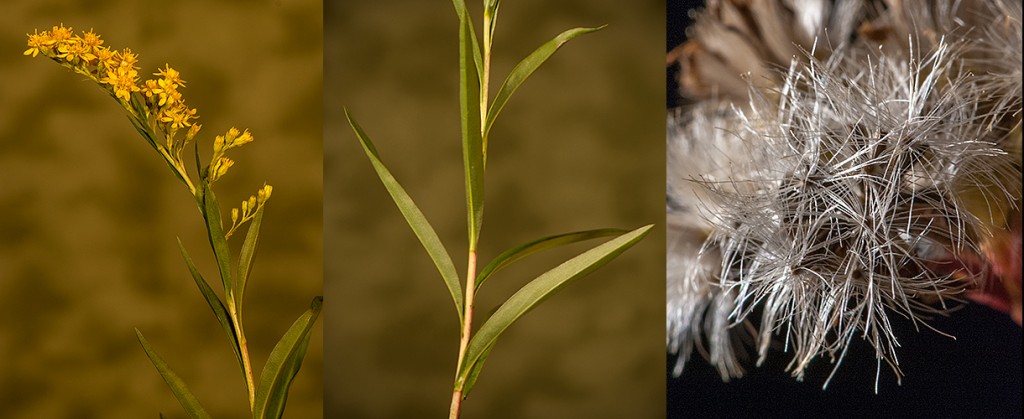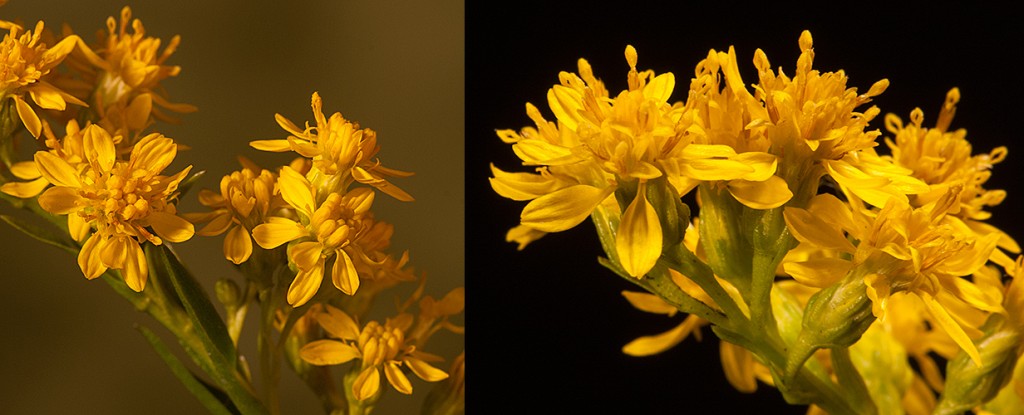Seaside Goldenrod (Solidago sempervirens) is native at the edges of salt marshes and sand dunes along the east coast of the United States. This halophyte occurs in Michigan along highways and roads that are heavily salted in the winter. Growing in areas that collect salt runoff they compete with few native plants in this harsh environment. First recorded in Michigan in 1978 in Wayne County it is now moving north.
This distinctive Goldenrod is easy to recognize. It is 1 to 2 meters (3 to 6 feet) tall and blooms in September and October. I recently found the plant in Troy, Michigan. A few plants still flowered but most had set seeds and some plants had dehisced some seeds. Succulent, toothless leaves clasp its stem. Its flowers are large for a goldenrod and contain only 6 to 10 ray flowers. They resemble small aster blooms. Sempervirens means “always green” but the plants turn brown in the winter in the north. Fuzzy seeds, called achenes, look like small dandelion heads. They are blown by the wind and are dispersed long distances.
In its native range it is an important nectar plant for migrating Monarch butterflies. This plant’s late blooming time in the north might delay the migration of Monarchs too long. If it expands its range in the north it may have a negative impact on migrating butterflies.
Seaside Goldenrod’s reported range in Michigan is from five counties in southeast Michigan and Berrien County in the extreme southwest corner. (See the Michigan Flora website) I found it in Oakland County which is the seventh county for it in the state. According to the Michigan Flora website the species is “Doubtless much more widespread already than collections suggest.” I have seen it for several years along the expressway where I could not stop and gather specimens but it is now invading secondary roads near the interstate.
It will be interesting to see if this plant continues to spread. Will it become another invasive species? I don’t know. It does not appear to accept much competition from other plant species and not many native plants tolerate this salty environment, so hopefully it will not become a problem. Look for the plant as you travel and help document its range.
Copyright 2013 by Donald Drife
Webpage Michigan Nature Guy
Follow MichiganNatureGuy on Facebook


